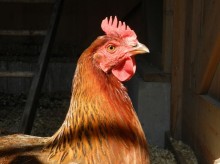Are you a teacher who is teaching your students about chickens and eggs? Need some ideas? You’ve come to the right place! Start your program by reading my book, Tillie Lays an Egg (Scholastic, 2009). Then, make use of my live-streaming barn cams on your computer and smart boards.
Concepts learned while reading
- Days of the week.
- Counting—for the littlest ones, simply count the eggs or the chickens. Older children can count every chicken image they see on the page.
- Chickens lay only one egg a day
- Chickens are omnivores — they eat corn and worms (and lots of vegetables!)
Activities to do after reading
- Watch the animals on the HenCam! http://HenCam.com (Please be aware that “Tillie” is the stage name for my bantam White Leghorns.)
- Have each child draw a picture of a chicken. There are many breeds of chickens. Some examples are in Tillie Lays an Egg. Go to the Who’s Who page on HenCam. http://HenCam.com/whos-who/the-animals/ My flock contains several breeds of hens. Note that different breeds not only have a variety of feather colors, but also legs can be white, yellow, black, red or brown. Combs can be big, little, or not there at all. Let the children get creative!
- Give names to your flock — one of the fun things about having chickens is coming up with names. Some people name their hens after famous women, like Eleanor Roosevelt and Betsy Ross. Others name them after favorite book characters, or spices, or breakfast cereals. Have fun!
- Write/draw/discuss the next Tillie adventure. Will she go to a fair? Your school? What silly place will she lay her egg?
- Create a Venn diagram that compares Tillie and the other hens.
- Have a book nook with chicken books. See my FAQ of favorite chicken books for children: http://HenCam.com/faq/childrens-books-featuring-chickens/
- Hatch your own chicks. This is a good resource: http://lancaster.unl.edu/4h/embryology/
- Spend time learning about feathers via The Cornell Lab’s excellent site, All About Feathers. http://biology.allaboutbirds.org/all-about-feathers/
Ways to use HenCam in the classroom
- Watch the animals on the HenCam. http://www.HenCam.com/
- Turn HenCam into a science station. Have children write down observations about what the animals are doing. How often do they eat, sleep, and rest? What else do they do?
- Do the animals behave differently when the weather changes? What happens when it is wet? Cold? Dark? Sunny?
- Preschoolers can learn to keep a chart. Keep a list of the different hens. Each time a child sees a hen on the screen, they can mark the chart, or mark it each time a hen is seen eating, or in a nesting box.
- Classrooms that do a hatching program usually give the chicks away before they feather out and become adults. The HenCam is a way to introduce mature chickens to the students.
Fun craft projects and other things
- Make a chicken mask. Glue on feathers.
- Make a yellow chicken crown. Glue on cutouts of eggs, chicks. Add feathers.
- Do the chicken dance. Here is the dance on The Lawrence Welk Show http://www.youtube.com/watch?v=6UV3kRV46Zs
- Make a chicken “purse” from a plate. http://www.freepreschoolcrafts.com/easter-chick-purse-from-paper-plate/
- Use a plastic cup to make a chicken clucker. http://www.sciencebob.com/experiments/chicken_cup.php
I welcome your ideas! Please email me at terry@terrygolson.com

